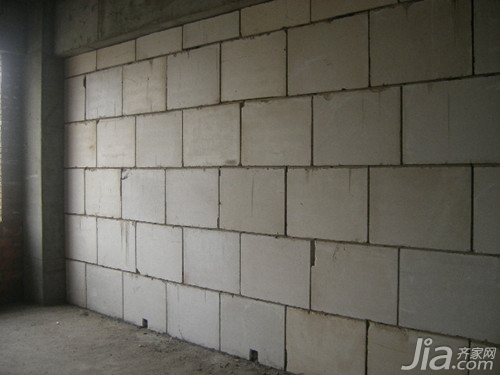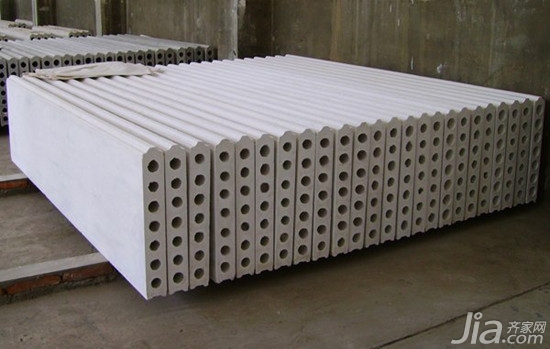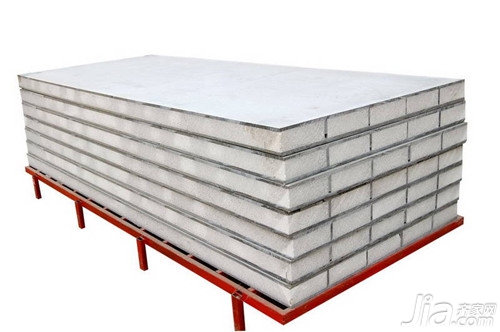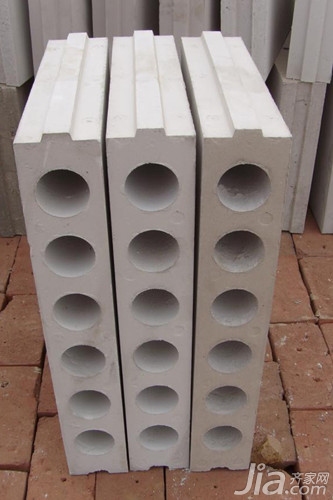With the development of construction and decoration industry, interior decoration materials are developing towards three aspects of lightness, environmental protection and energy saving. Therefore, it is not easy to select lightweight partition materials in the room. At present, many common production processes also develop in this direction. So, what is a lightweight partition ? What are the lightweight partition materials? Let's take a look with Xiaobian. What is a light partition wall Lightweight partitions refer to non-load-bearing lightweight internal partitions. This partition is characterized by its light weight, thin walls, easy disassembly, energy saving and environmental protection, and is conducive to industrial construction. There are many types of materials used in lightweight partition projects and construction methods of partition walls. According to different construction methods, they can be divided into block type, skeleton type, and plate type. According to the construction process, they can be divided into sheet partition walls, skeleton partition walls, and activities. There are four types of partitions and glass partitions. Aerated concrete blocks, hollow blocks and various small blocks and other masonry lightweight partitions are not included in the scope of architectural decoration works. The plate partition wall refers to a partition wall project that does not need to set the wall keel, and is self-supporting by the partition wall plate, and the prefabricated or existing partition wall plate is directly fixed to the main structure of the building. What are the lightweight partition materials? 1. Lightweight partition board Lightweight partition board is a new type of energy-saving wall material. It is a kind of wall material that looks like a hollow floor. It is made up of harmless phosphogypsum, light steel slag, fly ash and other industrial waste slag, and it is made by variable frequency steam pressurization curing. The lightweight partition board has the advantages of light weight, high strength, multiple environmental protection, thermal insulation, sound insulation, respiratory humidity control, fire prevention, rapid construction, and reduction of wall cost. 2. GRC lightweight partition material Glass fiber reinforced concrete; this is a kind of fiber cement composite material with alkali-resistant glass fiber as reinforcement material and cement mortar as matrix material. Aerated concrete block equipment foundation construction. Its outstanding features are good tensile and flexural strength, as well as good toughness. This material is particularly suitable for making decorative shapes and for expressing strong textures. Compared with these exterior wall decoration materials, the greatest advantage of GRC materials is that they can meet the individual needs of the architects, and complete the expression of decorative shapes and textures. 3, fiber-reinforced low alkalinity cement slabs. The standard stipulates the classification, raw materials, technical requirements, test methods, inspection rules, packaging, marking, transportation and storage of fiber-reinforced low-alkalinity cement slabs. This standard is applicable to construction slabs made of chrysotile, chopped alkali glass fiber or alkali-resistant glass fiber, and low alkalinity sulphoaluminate cement. Fiber-reinforced low-alkali cement slabs are mainly used for indoor non-load-bearing inner temples and ceiling slabs. 4, autoclaved aerated concrete slab The autoclaved aerated concrete slab is a kind of lightweight, porous and new type of green building material with cement, lime and silica sand as the main raw materials, and then according to the requirements of the structure, a different amount of preservative-treated steel mesh sheets are added. Through high temperature and high pressure, steam curing, the reaction produces autoclaved aerated concrete slabs with porous crystals. The density of the autoclaved aerated concrete slabs is smaller than that of ordinary cement materials, and it has excellent fire resistance, fire resistance, sound insulation, thermal insulation, and thermal insulation. 5, lightweight aggregate concrete strip It is mainly composed of foamed lightweight aggregate concrete slats with a layer of polystyrene foam interlayer in the foamed lightweight aggregate concrete slats. At least two sides of the four sides of the foamed lightweight aggregate concrete slats are arc-shaped. When the installation is completed, the connection between the two plates is rigidly connected in a double arc shape, and the connection is made of a material such as magnesium oxychloride cement as a cementing material. crack. 6, steel mesh cement sandwich panel The cores used in the front color steel sandwich panels are mainly phenolic foam, polyphenylene, extruded polystyrene, rigid polyurethane, tripolyester, and rock wool. The phenolic foam has excellent fireproof and thermal insulation properties. Instead, for example, the thermal insulation effect of phenolic foam is more than twice that of polyphenylene, and the fire performance is also higher than that of polyurethane. When the polyurethane is burned, it will release heavy smoke containing hydrogen cyanide. 7, gypsum wallboard (including paper gypsum board, gypsum hollow bar pull). Among them: paper gypsum board; gypsum hollow board. Using building gypsum as raw material, add water to stir and cast lightweight building gypsum products. In the production, it is allowed to add fibers, perlite, cement, river sand, fly ash, slag, etc., with sufficient mechanical strength. 8, metal surface sandwich panels (including metal surface polystyrene sandwich panels, metal surface rigid polyurethane sandwich panels and metal surface rock wool, slag cotton sandwich panels). Metal-faced sandwich panels refer to upper and lower two-story metal sheets, and core materials are heat-insulating materials with certain rigidity, such as rock wool and rigid foam plastics. Also known as the "sandwich" board. Bonding properties, peeling properties, bending capacity, thermal conductivity, fire endurance, burning properties. 9, composite lightweight sandwich panels , slats (the use of the board is listed above several kinds of wallboard and hollow strips). It is composed of two-sided medium-density cement fiber waterproofing board (100% asbestos-free) and light-weight aggregate concrete core (expanded perlite powder, polystyrene particles, light Portland cement, additives, etc.). Features: Light weight, solid, thin body, high strength, sound insulation, heat insulation, waterproof, fireproof, moisture-proof, anti-freeze, anti-aging, strong hanging force, impact resistance, nails can be sawed, construction is simple, can be directly slotted Line tube. The above is a brief introduction to what is a lightweight partition wall and a lightweight partition wall material. I hope to help you. Lightweight partition walls are widely used in people's living buildings because of their advantages of light weight, thermal insulation, and sound insulation. Everyone can learn about it as a knowledge reserve! If there is anything you do not understand, please leave a message and we will answer your questions as soon as possible! For more information, please visit this website. Stay tuned. Office partition partition wall partition What material for toilet partitions Lightweight partition board partition partition material Angelica Root Oil,Chinese Herbal Oil,Forsythia Essential Oil,Schisandra Essential Oil JiangXi SenHai Natural Plant Oil Co.,Ltd , https://www.senhaioil.com



